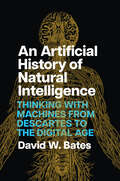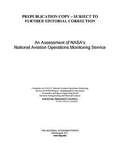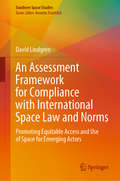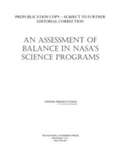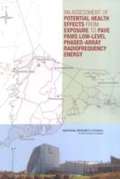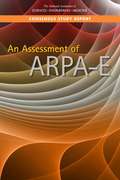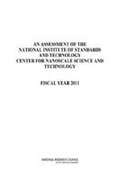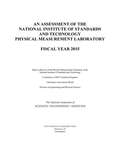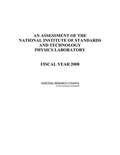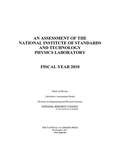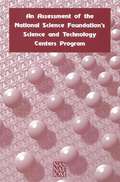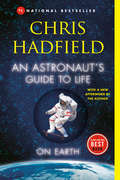- Table View
- List View
An Apple A Day
by Joe SchwarczEat salmon. It's full of good omega-3 fats. Don't eat salmon. It's full of PCBs and mercury. Eat more veggies. They're full of good antioxidants. Don't eat more veggies. The pesticides will give you cancer. Forget your dinner jacket and put on your lab coat: you have to be a nutritional scientist these days before you sit down to eat--which is why we need Dr. Joe Schwarcz, the expert in connecting chemistry to everyday life. In An Apple a Day, he's taken his thorough knowledge of food chemistry, applied it to today's top food fears, trends, and questions, and leavened it with his trademark lighthearted approach. The result is both an entertaining revelation of the miracles of science happening in our bodies every time we bite into a morsel of food, and a telling exploration of the myths, claims, and misconceptions surrounding our obsession with diets, nutrition, and weight. Looking first at how food affects our health, Dr. Joe examines what's in tomatoes, soy, and broccoli that can keep us healthy and how the hundreds of compounds in a single food react when they hit our bodies. Then he investigates how we manipulate our food supply, delving into the science of food additives and what benefits we might realize from adding bacteria to certain foods. He clears up the confusion about contaminants, examining everything from pesticide residues, remnants of antibiotics, the dreaded trans fats, and chemicals that may leach from cookware. And he takes a studied look at the science of calories and weighs in on popular diets.
An Artificial History of Natural Intelligence: Thinking with Machines from Descartes to the Digital Age
by David W. BatesA new history of human intelligence that argues that humans know themselves by knowing their machines. We imagine that we are both in control of and controlled by our bodies—autonomous and yet automatic. This entanglement, according to David W. Bates, emerged in the seventeenth century when humans first built and compared themselves with machines. Reading varied thinkers from Descartes to Kant to Turing, Bates reveals how time and time again technological developments offered new ways to imagine how the body’s automaticity worked alongside the mind’s autonomy. Tracing these evolving lines of thought, An Artificial History of Natural Intelligence offers a new theorization of the human as a being that is dependent on technology and produces itself as an artificial automaton without a natural, outside origin.
An Assesment of NASA's National Aviation Operations Monitoring Service
by National Research Council of the National AcademiesThe National Research Council of the National Academies was requested by the National Aeronautics and Space Administration (NASA) to perform an independent assessment of NASA's National Aviation Operations Monitoring Service (NAOMS) project, which was a survey administered to pilots from April 2001 through December 2004. The NRC reviewed various aspects of the NAOMS project, including the survey methodology, and conducted a limited analysis of the publicly available survey data. An Assessment of NASA's National Aviation Operations Monitoring Service presents the resulting analyses and findings.
An Assessment Framework for Compliance with International Space Law and Norms: Promoting Equitable Access and Use of Space for Emerging Actors (Southern Space Studies)
by David LindgrenThis book proposes a framework for assessing countries’ levels of compliance with international space law and norms. It begins by exploring the development of two movements – the evidence-based policymaking and programming movement, and the rise of ratings and rankings research – and their growth across various disciplines. The analysis suggests that such efforts are useful in gauging the behavior of countries in space according to how well they adhere to existing space law and norms. To date, there is no comprehensive, periodic, and systematic measure of countries’ efforts to comply with space law and norms; this work endeavors to fill that gap by offering a framework in which to assess compliance. Applying the framework results in five possible ratings that a country may be assigned, ranging from highly compliant to non-compliant. Ideally, the proposed framework can be used to promote compliance, and with it, space security and sustainability.
An Assessment Guide To Geriatric Neuropsychology
by Thomas Hadjistavropoulos Holly TuokkoAt least half of all neuropsychological assessments are performed on elderly persons, but the information clinicians need to make appropriate judgment calls is widely scattered. Several books offering general descriptions of the cognitive functioning of the aged or of neuropsychological conditions affecting them are helpful to practitioners but do not provide reliable and valid normative information. Two books that do provide this information do not focus on geriatric populations. A concise, yet comprehensive summary of what we now know about those over 65--with an extensive bibliography--An Assessment Guide to Geriatric Neuropsychology fills the gap. The neuropsychological assessment of elderly persons involves not only the performance-based measurement of various capacities but heavy reliance on reports from caregivers (both formal and informal) about the day to day functioning of the affected person. It also raises important, yet often neglected, ethical concerns. The authors discuss all the measures that detect and discriminate among cognitive disorders of elderly persons, including special measures relevant to caregiver reports, and provide useful tables to assist in differential diagnosis. They also reflect on the ethical issues that often confront the assessor of an elderly individual: informed consent, confidentiality, the right of bodily autonomy and self-determination, and appropriate feedback. This book will be an invaluable resource for all those called on to evaluate older clients.
An Assessment Of Balance In Nasa's Science Programs
by National Research Council of the National AcademiesWhen the space exploration initiative was announced, Congress asked the NRC to review the science NASA proposed to carryout under the initiative. It also asked the NRC to assess whether this program would provide balanced scientific research across the established disciplines supported by NASA in addition to supporting the new initiative. In 2005, the NRC released three studies focusing on a portion of that task, but changes at NASA forced the postponement of the last phase. This report presents that last phase with an assessment of the health of the NASA scientific disciplines under the budget requests imposed by the exploration initiative. The report also provides an analysis of whether the science budget appropriately reflects cross-disciplinary scientific priorities.
An Assessment Of Potential Health Effects From Exposure To Pave Paws Low-level Phased-array Radiofrequency Energy
by National Research Council of the National AcademiesPAVE PAWS is a phased-array warning system designed to detect and track sea-launched and intercontinental ballistic missiles operated on Cape Cod since 1979 by the U.S. Air Force Space Command. In 1979, the National Research Council issued two reports to address concerns from Cape Cod residents about the safety and possible health effects of the radiofrequency energy from the radar. Following up on the1979 report, the new report finds no evidence of adverse health effects to Cape Cod residents from long-term exposure to the PAVE PAWS radar. The report specifically investigated whether the PAVE PAWS radar might be responsible in part for the reported higher rates of certain cancers in the area, but concludes there is no increase in the total number of cancers or in specific cancers of the prostate, breast, lung, or colon due to radiation exposure from PAVE PAWS. The report did find in the scientific literature a few biological responses to radiofrequency exposures that were statistically significant. Such responses do not necessarily result in adverse health effects, but the report recommends additional studies to better discern the significance, if any, of those findings.
An Assessment Of Precision Time And Time Interval Science And Technology
by Technology Committee for an Assessment of Precision Time Time Interval ScienceAn Assessment Of Precision Time And Time Interval Science And Technology
An Assessment Of The Sbir Program At The National Science Foundation
by National Research Council of the National AcademiesThe Small Business Innovation Research (SBIR) program is one of the largest examples of U.S. public-private partnerships. Founded in 1982, SBIR was designed to encourage small business to develop new processes and products and to provide quality research in support of the many missions of the U.S. government, including health, energy, the environment, and national defense. In response to a request from the U.S. Congress, the National Research Council assessed SBIR as administered by the five federal agencies that together make up 96 percent of program expenditures. This book, one of six in the series, reports on the SBIR program at the National Science Foundation. The study finds that the SBIR program is sound in concept and effective in practice, but that it can also be improved. Currently, the program is delivering results that meet most of the congressional objectives, including stimulating technological innovation, increasing private-sector commercialization of innovations, using small businesses to meet federal research and development needs, and fostering participation by minority and disadvantaged persons. The book suggests ways in which the program can improve operations, continue to increase private-sector commercialization, and improve participation by women and minorities.
An Assessment of ARPA-E
by Engineering Medicine National Academies of SciencesIn 2005, the National Research Council report Rising Above the Gathering Storm recommended a new way for the federal government to spur technological breakthroughs in the energy sector. It recommended the creation of a new agency, the Advanced Research Projects Agency-Energy, or ARPA-E, as an adaptation of the Defense Advanced Research Projects Agency (DARPA) model—widely considered a successful experiment that has funded out-of-the-box, transformative research and engineering that made possible the Internet, GPS, and stealth aircraft. This new agency was envisioned as a means of tackling the nation’s energy challenges in a way that could translate basic research into technological breakthroughs while also addressing economic, environmental, and security issues. Congress authorized ARPA-E in the 2007 America COMPETES Act and requested an early assessment following 6 years of operation to examine the agency’s progress toward achieving its statutory mission and goals. This report documents the results of that assessment. It includes both an operational assessment of the agency’s funding programs and a technical assessment of its awards, to the extent possible.
An Assessment of Naval Hydromechanics Science and Technology
by Naval Studies Board National Research CouncilAn Assessment of Naval Hydromechanics Science and Technology
An Assessment of Non-Lethal Weapons Science and Technology
by Technology Committee for an Assessment of Non-Lethal Weapons ScienceNon-lethal weapons (NLWs) are designed to minimize fatalities and other undesired collateral damage when used. Events of the last few years including the attack on the USS Cole have raised ideas about the role NLWs can play in enhancing support to naval forces. In particular to what extent and in what areas should Department of the Navy (DoN) -sponsored science and technology (S&T) provide a research base for developing NLW capabilities? To assist with this question and to evaluate the current NLWs program, the Joint Non-Lethal Weapons Directorate (JNLWD) and the Office of Naval Research (ONR) requested the National Research Council perform an assessment of NLWs science and technology. The report presents the results of that assessment. It discusses promising NLW S&T areas, development accomplishments and concerns about NLW, and series of recommendations about future NLW development and application.
An Assessment of the Department of Energy's Office of Fusion Energy Sciences Program
by National Research CouncilThe National Academies Press (NAP)--publisher for the National Academies--publishes more than 200 books a year offering the most authoritative views, definitive information, and groundbreaking recommendations on a wide range of topics in science, engineering, and health. Our books are unique in that they are authored by the nation's leading experts in every scientific field.
An Assessment of the International Science and Technology Center: Redirecting Expertise in Weapons of Mass Destruction in the Former Soviet Union
by Office of International AffairsThis report reviews the ISTC's objectives and plans, discussed its activities with U.S. and FSU officials, and met with FSU grant recipients and institute directors. The committee concludes that during its first two years the ISTC was successful and effective in meeting its primary objective, which, in turn, has contributed to the larger goal of diminishing the risk of weapons proliferation. Moreover, the opportunities provided to FSU scientists and engineers do indeed offer meaningful nonweapons-related work, which helps address the demoralization that may otherwise contribute to scientists' being lured into work for unfriendly governments. The committee believes the ISTC has also been successful in addressing its secondary objectives—namely, the solution of national and international technical problems; the support of basic and applied research and technology development for peaceful purposes; and, to a lesser degree, reinforcement of the transition of the FSU to a market-driven economy.
An Assessment of the National Institute of Standards and Technology Center for Nanoscale Science and Technology: Fiscal Year 2011
by Technology Panel on Nanoscale ScienceSince 1959, the National Research Council (NRC), at the request of the National Institute of Standards and Technology (NIST), has annually assembled panels of experts to assess the quality and effectiveness of the NIST measurements and standards laboratories. In 2011, the NRC evaluated three of the six NIST laboratories: the Center for Nanoscale Science and Technology (CNST), the NIST Center for Neutron Research (NCNR) and the Information Technology Laboratory (ITL). Each of these was addressed individually by a separate panel of experts; this report assesses CNST.
An Assessment of the National Institute of Standards and Technology Center for Neutron Research: Fiscal Year 2013
by National Research Council of the National AcademiesThe National Institute of Standards and Technology (NIST) Center for Neutron Research (NCNR), with its strong tradition of hiring and developing excellent scientific and technical staff, is one of the leading institutions worldwide in neutron instrumentation, technology, and science. It is a very well-managed user facility. With the recent completion of a $95 million expansion, performed on time and on budget, it has enhanced its instrumentation capabilities and has constructed a new guide hall. This expansion further enhances NCNR’s ability to meet high user demands—a factor of two higher than capacity—for experimentation to conduct cutting-edge research. NCNR’s high scientific productivity is due, in part, to effective communication between the management and staff and with the internal and external user communities. <P> To continue to respond effectively to a changing environment and opportunities afforded by the recent reorganization of NIST, the NCNR management should pay particular attention to the considerations below to ensure that the NCNR continues to effectively serve its mission. <P><P> NCNR management has historically done an excellent job at short-term, tactical planning. The NIST reorganization now provides them with an opportunity to operate more strategically. Because in the near future some of the more senior scientific and technical staff will be retiring, formalized succession planning needs to be performed in coordination with the broader NIST management.
An Assessment of the National Institute of Standards and Technology Physical Measurement Laboratory: Fiscal Year 2015
by Engineering Medicine National Academies of SciencesThe Physical Measurement Laboratory (PML) at the National Institute of Standards and Technology (NIST) is dedicated to three fundamental and complementary tasks: (1) increase the accuracy of our knowledge of the physical parameters that are the foundation of our technology-driven society; (2) disseminate technologies by which these physical parameters can be accessed in a standardized way by the stakeholders; and (3) conduct research at both fundamental and applied levels to provide knowledge that may eventually lead to advances in measurement approaches and standards. This report assesses the scientific and technical work performed by the PML and identifies salient examples of accomplishments, challenges, and opportunities for improvement for each of its nine divisions.
An Assessment of the National Institute of Standards and Technology Physics Laboratory
by National Research Council Division on Engineering and Physical Sciences Laboratory Assessments Board Panel On PhysicsThe mission of the NIST Physics Laboratory is to support U.S. industry, government, and the scientific community by providing measurement services and research for electronic, optical, and radiation technology. In this respect, the laboratory provides the foundation for the metrology of optical and ionizing radiations, time and frequency, and fundamental quantum processes, historically major areas of standards and technology. The Panel on Physics visited the six divisions of the laboratory and reviewed a selected sample of their programs and projects. This book finds that the overall quality and productivity of the Physics Laboratory are comparable to or better than those of other peer institutions, an accomplishment that is being achieved with an infrastructure that is smaller in both size and funding than the size and funding of most national and agency laboratories in the United States.
An Assessment of the National Institute of Standards and Technology Physics Laboratory: Fiscal Year 2010
by National Research Council of the National AcademiesThe mission of the National Institute of Standards and Technology (NIST) Physics Laboratory is to support U.S. industry, government, and the scientific community by providing measurement services and research for electronic, optical, and radiation technology. In this respect, the laboratory provides the foundation for the metrology of optical and ionizing radiations, time and frequency, and fundamental quantum processes, historically major areas of standards and technology. The Panel on Physics visited the six divisions of the laboratory and reviewed a selected sample of their programs and projects.
An Assessment of the National Science Foundation's Science and Technology Centers Program
by Committee on Science Engineering Public PolicyAn Assessment of the National Science Foundation's Science and Technology Centers Program
An Assessment of the Prospects for Inertial Fusion Energy
by National Research Council Division on Engineering and Physical Sciences Board on Physics and Astronomy Board on Energy and Environmental Systems Committee on the Prospects for Inertial Confinement Fusion Energy SystemsThe potential for using fusion energy to produce commercial electric power was first explored in the 1950s. Harnessing fusion energy offers the prospect of a nearly carbon-free energy source with a virtually unlimited supply of fuel. Unlike nuclear fission plants, appropriately designed fusion power plants would not produce the large amounts of high-level nuclear waste that requires long-term disposal. Due to these prospects, many nations have initiated research and development (R&D) programs aimed at developing fusion as an energy source. Two R&D approaches are being explored: magnetic fusion energy (MFE) and inertial fusion energy (IFE). An Assessment of the Prospects for Inertial Fusion Energy describes and assesses the current status of IFE research in the United States; compares the various technical approaches to IFE; and identifies the scientific and engineering challenges associated with developing inertial confinement fusion (ICF) in particular as an energy source. It also provides guidance on an R&D roadmap at the conceptual level for a national program focusing on the design and construction of an inertial fusion energy demonstration plant.
An Assessment of the Science Proposed for the Deep Underground Science and Engineering Laboratory(DUSEL)
by Ad Hoc Committee to Assess the Science Proposed for a Deep Underground Science Engineering LaboratoryAccording to the big bang theory, our Universe began in a state of unimaginably high energy and density, contained in a space of subatomic dimensions. At that time, unlike today, the fundamental forces of nature were presumably unified and the particles present were interacting at energies not attainable by present-day accelerators. Underground laboratories provide the conditions to investigate processes involving rare phenomena in matter and to detect the weak effects of highly elusive particles by replicating similar environments to those once harnessed during the earliest states of the Earth. These laboratories now appear to be the gateway to understanding the physics of the grand unification of the forces of nature. Built to shield extremely sensitive detectors from the noise of their surroundings and the signals associated with cosmic rays, underground facilities have been established during the last 30 years at a number of sites worldwide. To date, the United States' efforts to develop such facilities have been modest and consist primarily of small underground laboratories. However, the U. S. underground community has pushed for larger underground facilities on the scale of major laboratories in other countries. An Assessment of the Deep Underground Science and Engineering Laboratory (DUSEL) addresses this matter by evaluating the major physics questions and experiments that could be explored with the proposed DUSEL. Measuring the potential impact, this assessment also examines the broader effects of the DUSEL in regards to education and public outreach, and evaluates the need associated with developing U. S. programs similar to science programs in other regions of the world.
An Assessment of the U.S. Environmental Protection Agency's National Environmental Performance Track Program
by Rena Rudavsky Noreen Clancy Nicholas Burger Christopher Nelson Scott HassellThis report addresses the conceptual basis, design, and implementation of the National Environmental Performance Track program. The voluntary program sought to encourage facilities to improve their environmental performance and provide a more collaborative relationship between facilities and regulators. While the program had mixed success, EPA should continue to seek out new approaches to complement and enhance traditional regulatory approaches.
An Astrobiology Strategy for the EXPLORATION of MARS
by National Research Council of the National AcademiesThree recent developments have greatly increased interest in the search for life on Mars. The first is new information about the Martian environment including evidence of a watery past and the possibility of atmospheric methane. The second is the possibility of microbial viability on Mars. Finally, the Vision for Space Exploration initiative included an explicit directive to search for the evidence of life on Mars. These scientific and political developments led NASA to request the NRC’s assistance in formulating an up-to-date integrated astrobiology strategy for Mars exploration. Among other topics, this report presents a review of current knowledge about possible life on Mars; an astrobiological assessment of current Mars missions; a review of Mars-mission planetary protection; and findings and recommendations. The report notes that the greatest increase in understanding of Mars will come from the collection and return to Earth of a well-chosen suite of Martian surface materials.
An Astronaut's Guide to Life on Earth
by Chris HadfieldAs Commander of the International Space Station, Chris Hadfield captivated the world with stunning photos and commentary from space. Now, in his first book, Chris offers readers extraordinary stories from his life as an astronaut, and shows how to make the impossible a reality. Chris Hadfield decided to become an astronaut after watching the Apollo moon landing with his family on Stag Island, Ontario, when he was nine years old, and it was impossible for Canadians to be astronauts. In 2013, he served as Commander of the International Space Station orbiting the Earth during a five-month mission. Fulfilling this lifelong dream required intense focus, natural ability and a singular commitment to "thinking like an astronaut." In An Astronaut's Guide to Life on Earth, Chris gives us a rare insider's perspective on just what that kind of thinking involves, and how earthbound humans can use it to achieve success and happiness in their lives.Astronaut training turns popular wisdom about how to be successful on its head. Instead of visualizing victory, astronauts prepare for the worst; always sweat the small stuff; and do care what others think. Chris shows how this unique education comes into play with dramatic anecdotes about going blind during a spacewalk, getting rid of a live snake while piloting a plane, and docking with space station Mir when laser tracking systems fail at the critical moment. Along the way, he shares exhilarating experiences, and challenges, from his 144 days on the ISS, and provides an unforgettable answer to his most-asked question: What's it really like in outer space?Written with humour, humility and a profound optimism for the future of space exploration, An Astronaut's Guide to Life on Earth offers readers not just the inspiring story of one man's journey to the ISS, but the opportunity to step into his space-boots and think like an astronaut--and renew their commitment to pursuing their own dreams, big or small.

